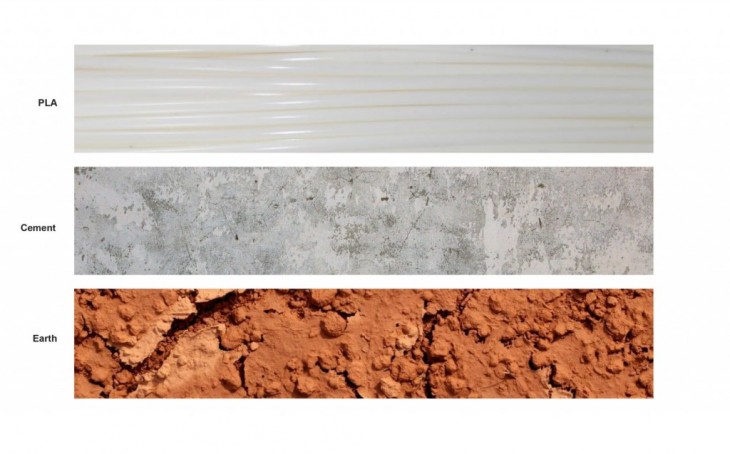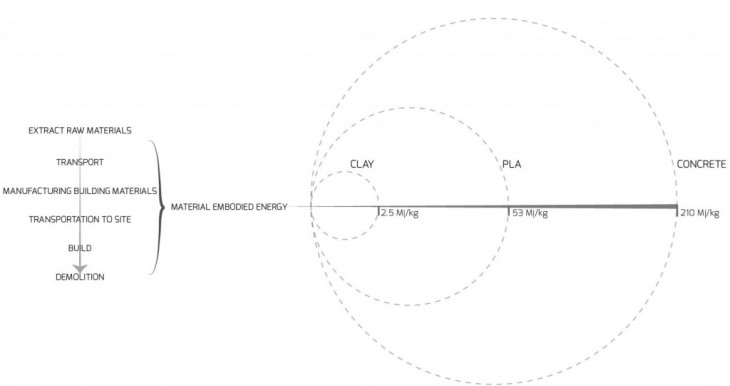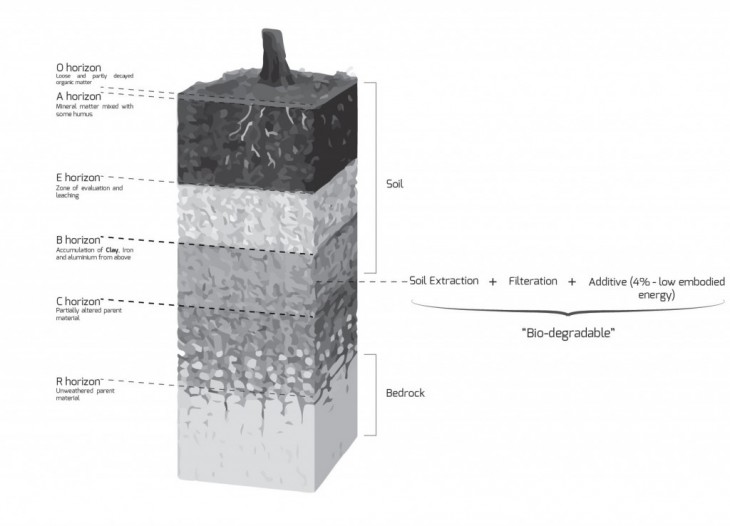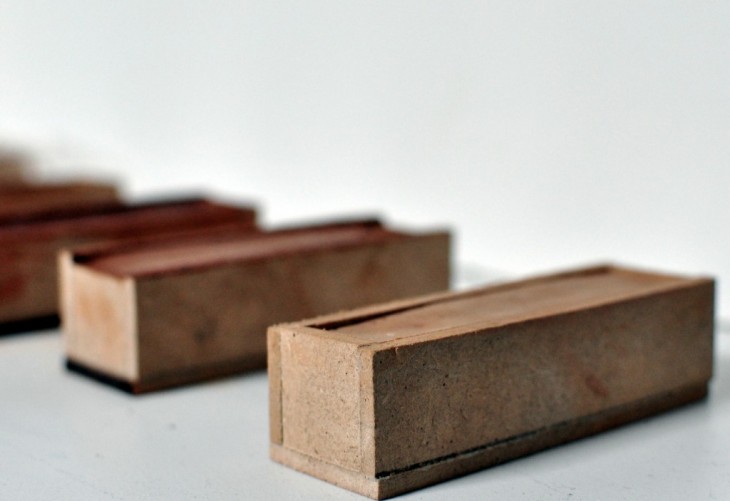When choosing the material for the research, it was important to decide whether, when compared to other materials, it has any particular properties that might transform it into an optimum choice. One comparison was with PLA, a material offering higher 3D Printing speed or a shinier, smoother appearance, but that deforms easily because of heat and is not very sturdy. Cement is also a more safe choice when discussing the architectural scale, but it is a material that needs technology which causes emissions of airborne pollution in the form of dust, gases, noise and vibration. Also, cement or concrete is produced off-site, therefore requires transportation from the place of production to the building site.

Clay is a natural material that can be locally extracted worldwide, with exceptions just in areas such as the Antarctic. Clay requires a low level of embodied energy, needs lesser human labor, presents very low fabrication cost, and most importantly is an environmentally friendly material.

During the workshop, the basic clay composition was altered with other ingredients and various proportions of water, in order to manipulate the mechanical properties of the material.

The continuous adding or subtracting of new additives led to alternate material behavior regarding structural resistance. Clay generally presents a good behavior when it comes to resisting compressive forces, however it is weaker in tension and shear forces.

It was also established that the additives can be optimized to enhance conductivity, hydrophobic properties or reflection levels, but so far it can be noticed that various composition lead to very different drying times, and details such as the fact that a clay that is too dry will end in a cracked surface, while a clay that is too liquid will become an unprintable material, since it will not stay stable while extruded.
Program Directors: Edouard Cabay, Alexandre Dubor
Research Advisor: Areti Markopoulou
Students: Abdullah Ibrahim, Sameera Chukkapalli, Tanuj Thomas, Lili Tayefi, Chenthur Raaghav, Iason Giraud, Lidia Ratoi
The project is based on IAAC Research Project Pylos developed by Sofoklis Giannakopoulos within the Open Thesis Fabrication Program in 2014
